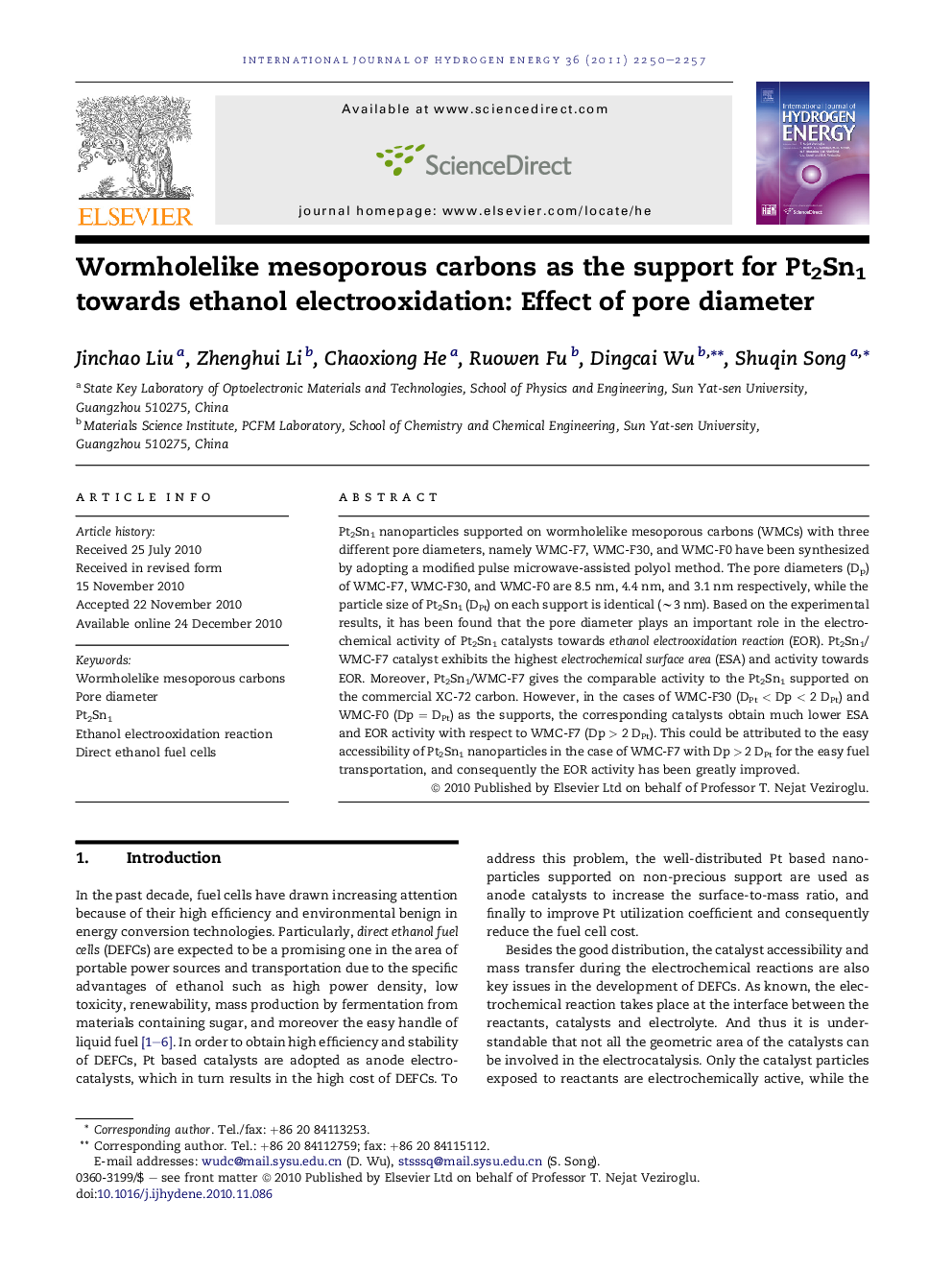| Article ID | Journal | Published Year | Pages | File Type |
|---|---|---|---|---|
| 7724453 | International Journal of Hydrogen Energy | 2011 | 8 Pages |
Abstract
Pt2Sn1 nanoparticles supported on wormholelike mesoporous carbons (WMCs) with three different pore diameters, namely WMC-F7, WMC-F30, and WMC-F0 have been synthesized by adopting a modified pulse microwave-assisted polyol method. The pore diameters (Dp) of WMC-F7, WMC-F30, and WMC-F0 are 8.5 nm, 4.4 nm, and 3.1 nm respectively, while the particle size of Pt2Sn1 (DPt) on each support is identical (â¼3 nm). Based on the experimental results, it has been found that the pore diameter plays an important role in the electrochemical activity of Pt2Sn1 catalysts towards ethanol electrooxidation reaction (EOR). Pt2Sn1/WMC-F7 catalyst exhibits the highest electrochemical surface area (ESA) and activity towards EOR. Moreover, Pt2Sn1/WMC-F7 gives the comparable activity to the Pt2Sn1 supported on the commercial XC-72 carbon. However, in the cases of WMC-F30 (DPt < Dp < 2 DPt) and WMC-F0 (Dp = DPt) as the supports, the corresponding catalysts obtain much lower ESA and EOR activity with respect to WMC-F7 (Dp > 2 DPt). This could be attributed to the easy accessibility of Pt2Sn1 nanoparticles in the case of WMC-F7 with Dp > 2 DPt for the easy fuel transportation, and consequently the EOR activity has been greatly improved.
Related Topics
Physical Sciences and Engineering
Chemistry
Electrochemistry
Authors
Jinchao Liu, Zhenghui Li, Chaoxiong He, Ruowen Fu, Dingcai Wu, Shuqin Song,
